Chia-Wei Hsing
Quantum-Inspired Tensor Neural Networks for Option Pricing
Dec 28, 2022Abstract:Recent advances in deep learning have enabled us to address the curse of dimensionality (COD) by solving problems in higher dimensions. A subset of such approaches of addressing the COD has led us to solving high-dimensional PDEs. This has resulted in opening doors to solving a variety of real-world problems ranging from mathematical finance to stochastic control for industrial applications. Although feasible, these deep learning methods are still constrained by training time and memory. Tackling these shortcomings, Tensor Neural Networks (TNN) demonstrate that they can provide significant parameter savings while attaining the same accuracy as compared to the classical Dense Neural Network (DNN). In addition, we also show how TNN can be trained faster than DNN for the same accuracy. Besides TNN, we also introduce Tensor Network Initializer (TNN Init), a weight initialization scheme that leads to faster convergence with smaller variance for an equivalent parameter count as compared to a DNN. We benchmark TNN and TNN Init by applying them to solve the parabolic PDE associated with the Heston model, which is widely used in financial pricing theory.
Quantum-Inspired Tensor Neural Networks for Partial Differential Equations
Aug 10, 2022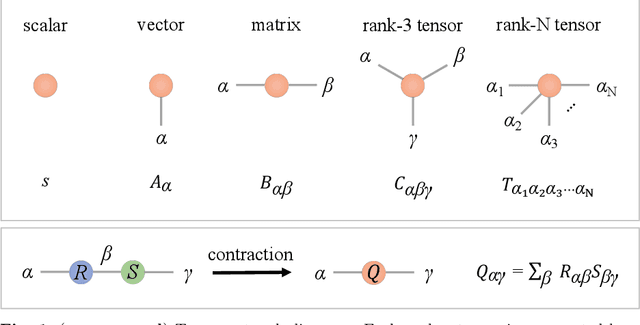
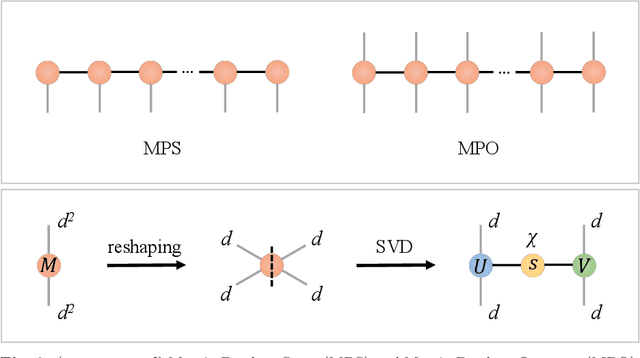


Abstract:Partial Differential Equations (PDEs) are used to model a variety of dynamical systems in science and engineering. Recent advances in deep learning have enabled us to solve them in a higher dimension by addressing the curse of dimensionality in new ways. However, deep learning methods are constrained by training time and memory. To tackle these shortcomings, we implement Tensor Neural Networks (TNN), a quantum-inspired neural network architecture that leverages Tensor Network ideas to improve upon deep learning approaches. We demonstrate that TNN provide significant parameter savings while attaining the same accuracy as compared to the classical Dense Neural Network (DNN). In addition, we also show how TNN can be trained faster than DNN for the same accuracy. We benchmark TNN by applying them to solve parabolic PDEs, specifically the Black-Scholes-Barenblatt equation, widely used in financial pricing theory, empirically showing the advantages of TNN over DNN. Further examples, such as the Hamilton-Jacobi-Bellman equation, are also discussed.
Variational Quantum Reinforcement Learning via Evolutionary Optimization
Sep 01, 2021

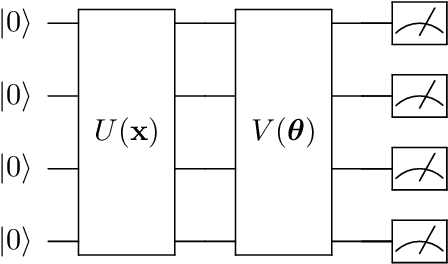

Abstract:Recent advance in classical reinforcement learning (RL) and quantum computation (QC) points to a promising direction of performing RL on a quantum computer. However, potential applications in quantum RL are limited by the number of qubits available in the modern quantum devices. Here we present two frameworks of deep quantum RL tasks using a gradient-free evolution optimization: First, we apply the amplitude encoding scheme to the Cart-Pole problem; Second, we propose a hybrid framework where the quantum RL agents are equipped with hybrid tensor network-variational quantum circuit (TN-VQC) architecture to handle inputs with dimensions exceeding the number of qubits. This allows us to perform quantum RL on the MiniGrid environment with 147-dimensional inputs. We demonstrate the quantum advantage of parameter saving using the amplitude encoding. The hybrid TN-VQC architecture provides a natural way to perform efficient compression of the input dimension, enabling further quantum RL applications on noisy intermediate-scale quantum devices.
An end-to-end trainable hybrid classical-quantum classifier
Feb 04, 2021
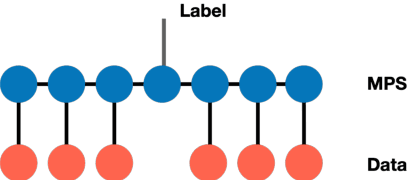

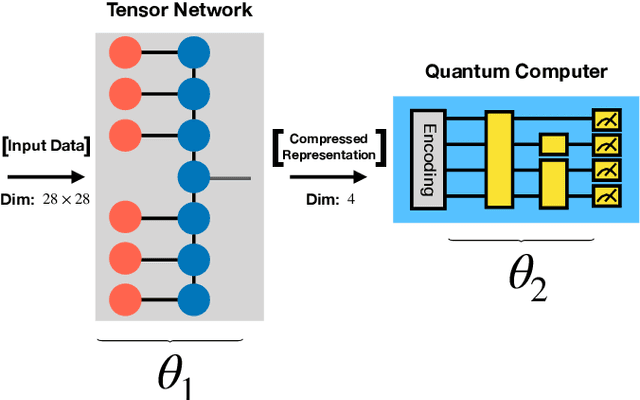
Abstract:We introduce a hybrid model combining a quantum-inspired tensor network and a variational quantum circuit to perform supervised learning tasks. This architecture allows for the classical and quantum parts of the model to be trained simultaneously, providing an end-to-end training framework. We show that compared to the principal component analysis, a tensor network based on the matrix product state with low bond dimensions performs better as a feature extractor for the input data of the variational quantum circuit in the binary and ternary classification of MNIST and Fashion-MNIST datasets. The architecture is highly adaptable and the classical-quantum boundary can be adjusted according the availability of the quantum resource by exploiting the correspondence between tensor networks and quantum circuits.
Hybrid quantum-classical classifier based on tensor network and variational quantum circuit
Nov 30, 2020

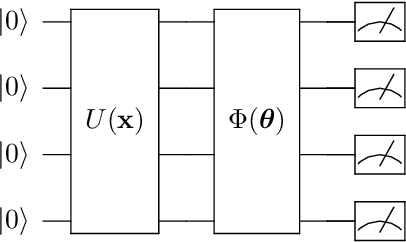

Abstract:One key step in performing quantum machine learning (QML) on noisy intermediate-scale quantum (NISQ) devices is the dimension reduction of the input data prior to their encoding. Traditional principle component analysis (PCA) and neural networks have been used to perform this task; however, the classical and quantum layers are usually trained separately. A framework that allows for a better integration of the two key components is thus highly desirable. Here we introduce a hybrid model combining the quantum-inspired tensor networks (TN) and the variational quantum circuits (VQC) to perform supervised learning tasks, which allows for an end-to-end training. We show that a matrix product state based TN with low bond dimensions performs better than PCA as a feature extractor to compress data for the input of VQCs in the binary classification of MNIST dataset. The architecture is highly adaptable and can easily incorporate extra quantum resource when available.
 Add to Chrome
Add to Chrome Add to Firefox
Add to Firefox Add to Edge
Add to Edge